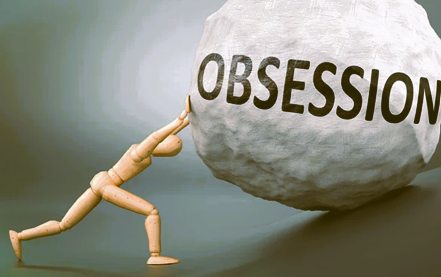In the business world, it’s tempting to pour all your energy into creating the perfect product. After all, a great product is essential, right? While that’s true to some extent, obsessing over your product can actually backfire, leaving other critical aspects of your business neglected. For sustainable growth, focus it’s vital to strike a balance between product development and other essential business areas.
This article explores how hyper-focusing on your product can hurt your business and highlights what you should prioritize instead to ensure steady, long-term growth.
The Problem with Product Obsession
1. Tunnel Vision on Features Over Value
Focusing excessively on adding features or refining your product can blind you to what truly matters: solving customer problems. Customers don’t buy features; they buy solutions. Constantly tweaking your product without considering its real-world impact may alienate potential users and lead to diminishing returns.
2. Neglecting Customer Feedback
Overinvesting in your vision for the product often sidelines customer feedback. This disconnect can result in a product that fails to meet the actual needs of your audience. Businesses that listen to customers and adapt are more likely to succeed.
3. Resource Imbalance
When all your time, energy, and budget are spent on product perfection, other critical areas like marketing, customer service, and scaling operations suffer. A well-rounded business requires balance across departments to thrive.
4. Competitive Risks
Obsessing over details in isolation can delay your product launch or updates, giving competitors the chance to gain a market edge. Speed and adaptability often trump perfection in fast-moving industries.
What to Focus On for Sustainable Growth
To fuel long-term success, you need a broader strategy that encompasses more than just product excellence. Here’s where to direct your efforts:
1. Understanding Your Target Market
Knowing your audience is key. Conduct market research to uncover pain points, preferences, and trends. Develop customer personas to guide your product development and marketing strategies. By aligning your product with market demands, you’ll deliver real value and build trust.
How to Get Started:
- Use surveys and focus groups.
- Monitor social media and forums for feedback.
- Study competitors’ offerings and customer responses.
2. Building a Strong Brand
A compelling brand goes beyond the product itself. It creates emotional connections and builds loyalty. Customers often choose brands they relate to, even when similar products are available elsewhere.
Actionable Steps:
- Craft a clear mission and vision for your company.
- Invest in professional branding, including a memorable logo and consistent messaging.
- Tell your story authentically through marketing campaigns.
3. Scaling Your Marketing Efforts
Even the best product will fail if no one knows about it. Marketing is the bridge between your product and your audience. Focus on building multi-channel strategies to amplify your reach.
Top Marketing Channels to Leverage:
- Social media campaigns for visibility.
- Content marketing to establish thought leadership.
- Paid ads to target specific demographics effectively.
4. Prioritizing Customer Experience
Loyal customers are a business’s lifeblood. A great product won’t retain users if customer support or onboarding processes are lacking. Make the customer experience seamless and engaging.
Ways to Enhance Customer Experience:
- Offer live chat support for quick resolutions.
- Personalize interactions using customer data.
- Gather regular feedback to refine your processes.
5. Building a Scalable Business Model
Sustainable growth hinges on scalability. Ensure your operations, supply chain, and workforce are equipped to handle increasing demand. Efficiency and adaptability will allow your business to grow without collapsing under pressure.
Checklist for Scalability:
- Automate repetitive tasks to save time.
- Implement cloud-based tools for seamless collaboration.
- Optimize supply chains to meet growing production needs.
6. Cultivating a Growth Mindset
Sustainable businesses embrace learning and adaptation. A growth mindset encourages innovation, resilience, and a willingness to pivot when necessary.
Encourage a Growth-Oriented Culture By:
- Rewarding team creativity and problem-solving.
- Regularly evaluating and revising goals.
- Staying open to new technologies and methods.
Striking the Right Balance
Obsessing over your product doesn’t mean ignoring it entirely. It’s about understanding that your product is just one piece of a larger puzzle. By balancing your focus across marketing, branding, customer experience, and operational efficiency, you set the stage for long-term success.
A business that prioritizes holistic growth ensures that every part of its ecosystem thrives. This approach leads to a resilient and competitive company capable of adapting to changing market conditions.
Conclusion
While product quality is essential, an unbalanced focus on perfecting it can harm your business. To fuel sustainable growth, invest in understanding your audience, building your brand, scaling marketing, enhancing customer experiences, and creating scalable operations. These areas not only complement your product but also drive long-term success.
Start today by reassessing your priorities and ensuring your business is built to grow, not just to sell a product.
Who we are: Funded.com is a platform that is A+ BBB accredited over 10+ years. Access our network of Angel Investors, Venture Capital or Lenders. Let us professionally write your Business Plan.





 Rss Feed
Rss Feed


